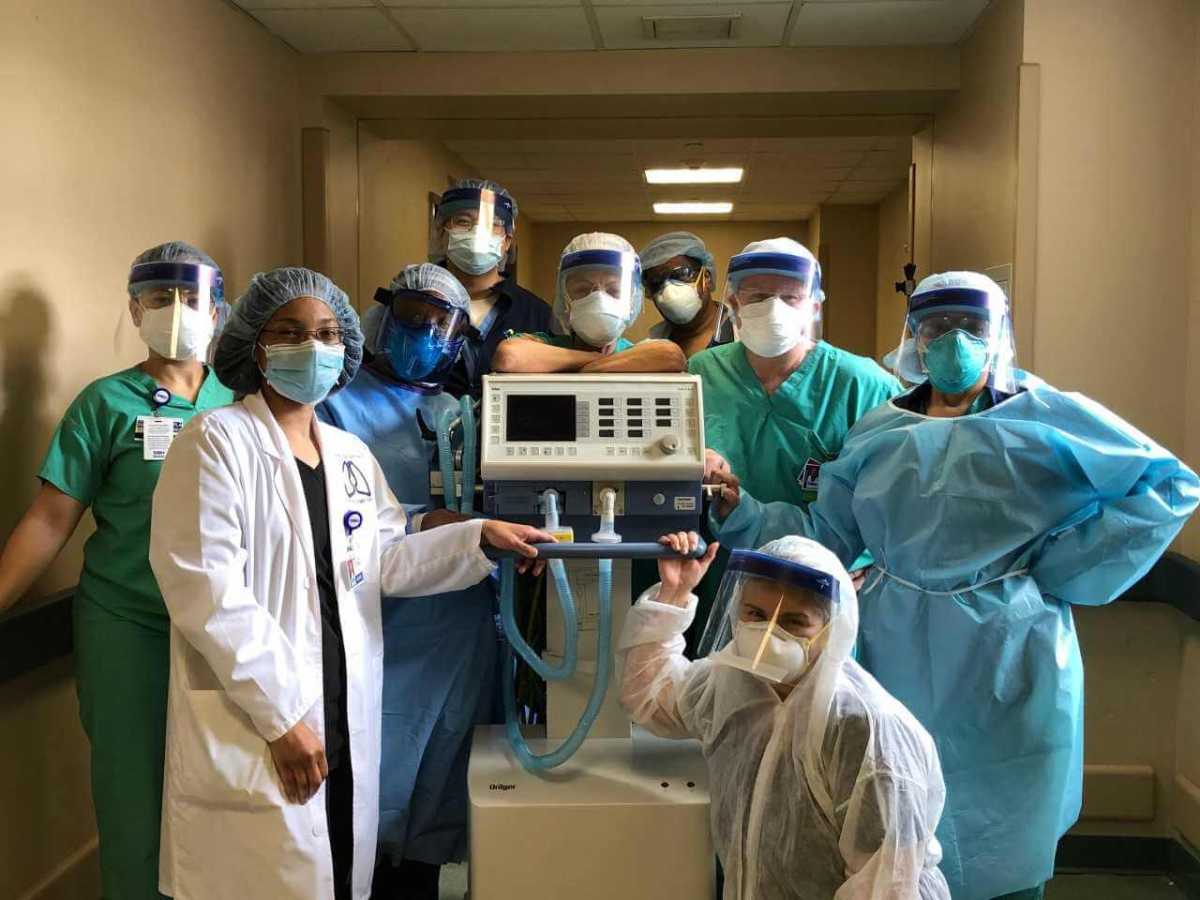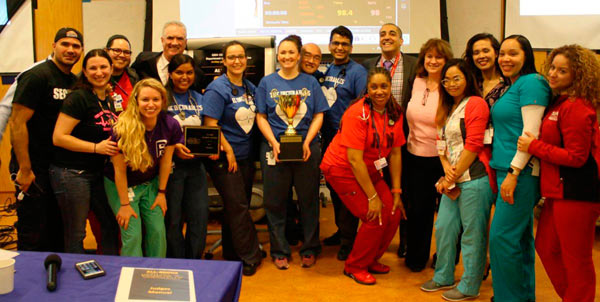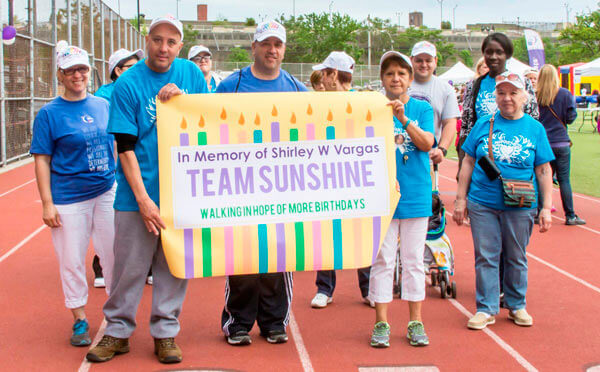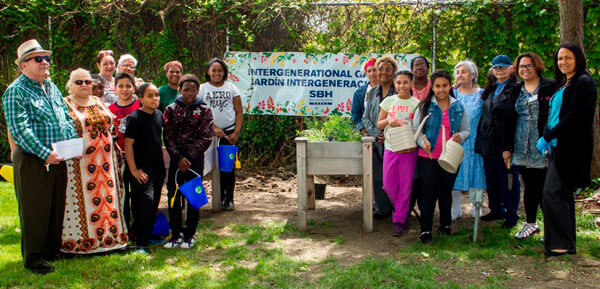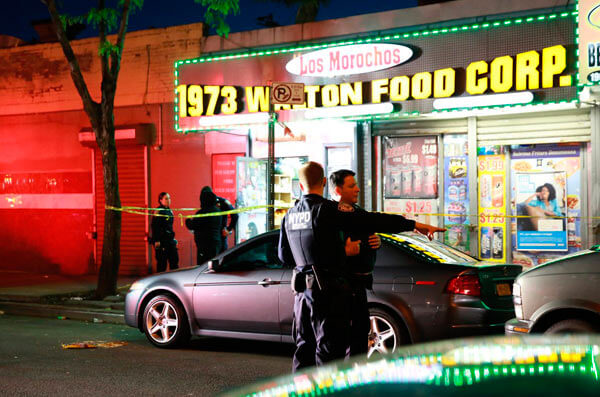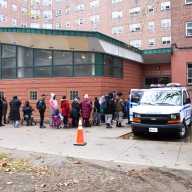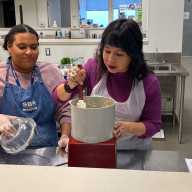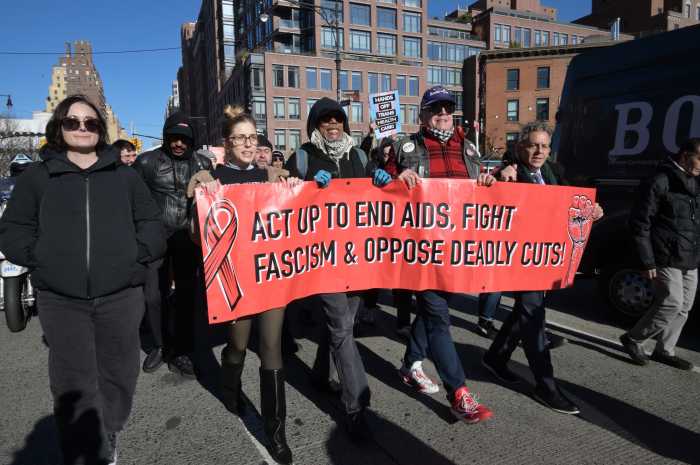BY ST. BARNABAS HOSPITAL
Many COVID-19 patients come into St. Barnabas Hospital gasping for breath.
This is what makes Tracey Martin-Johnson, who heads the hospital’s respiratory therapy department, such a critical player during the pandemic. She and her team, including supervisors Radhames Rodriguez and Shackera Abbott-Barcoo, work closely with ICU/ER physicians at patient bedsides, managing and monitoring ventilators and other breathing devices.
“Ventilator management is at the core of what we do,” said Martin-Johnson, who works with a team of about two dozen respiratory professionals. “Once the patient is intubated, we put them on the breathing machine, monitor their status and assist them until they become well enough to come off the machine.”
The ventilator is a life support treatment that helps people breathe when they can’t do it on their own. In many cases, this mechanical device makes the difference between life and death. The respiratory team makes changes on the ventilator as needed, draws arterial blood gases and works with the physicians on appropriate ventilator settings. Once the green light is given by the physician, they wean the patient from the mechanical device.
Martin-Johnson alerts the medical team to any acute shortage of ventilators, an ongoing problem at St. Barnabas Hospital and many New York City hospitals. This may mean testing to see if patients with chronic respiratory problems who are hospitalized, and don’t have the COVID-19 virus, can tolerate being taken off the traditional ventilators using a non-invasive machine to provide support so ventilators can be saved for those patients most dependent on them.
The entire respiratory therapy team is also responsible for the infection control process of the ventilators so that once the patient has been extubated, the machine can be put back into rotation expeditiously ¯ a process which can take as little as 30 minutes.
“The team – each individual works 12-hour shifts as part of the department’s 24/7 responsibility – has been continually going above and beyond, working extremely hard, pushing and giving everything,” said Martin-Johnson.
“Tracy has a remarkable knowledge of a broad range of ventilators. We get all kinds of ventilators and she’s figured out how to use them all,” according to Dr. Edward Telzak, chair of the department of medicine at SBH, who works closely with the respiratory therapy team and anesthesia department on testing various respiratory options.
Like other health care workers on the front line, safety is a major concern.
“As health care workers, we have chosen this profession. I’m passionate about the work I do. Yet, safety is important,” said Martin-Johnson. “In my huddles, I’m very forward with staff that safety is a priority because I don’t want them to get sick. As far as PPE (personal protective equipment) goes, I’m very much on top of this.”
This includes hand delivering appropriate PPE to all staff members at the beginning of each shift and reminding them to use hand sanitizers and washing their hands regularly.
“Our limited numbers pose one of our main challenges,” she said. “But it’s very satisfying that we have been sticking together as a team during a very tough time.”

